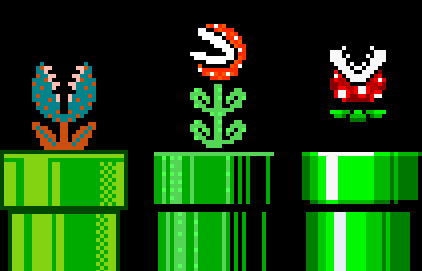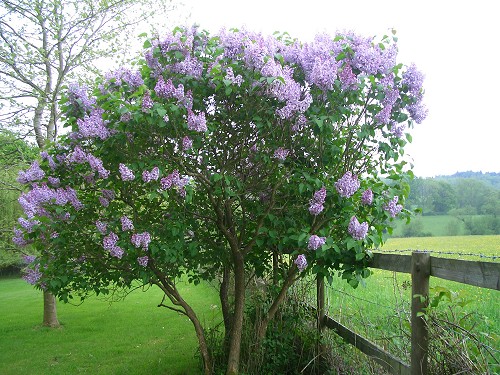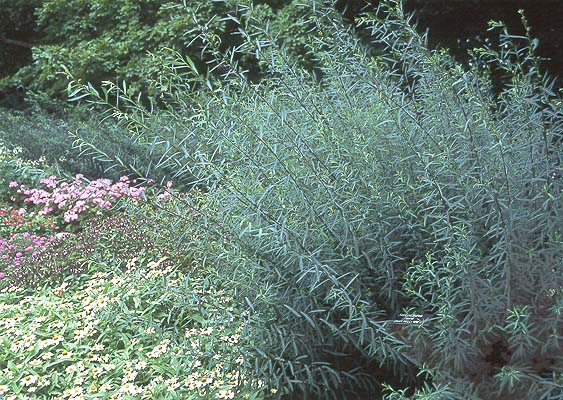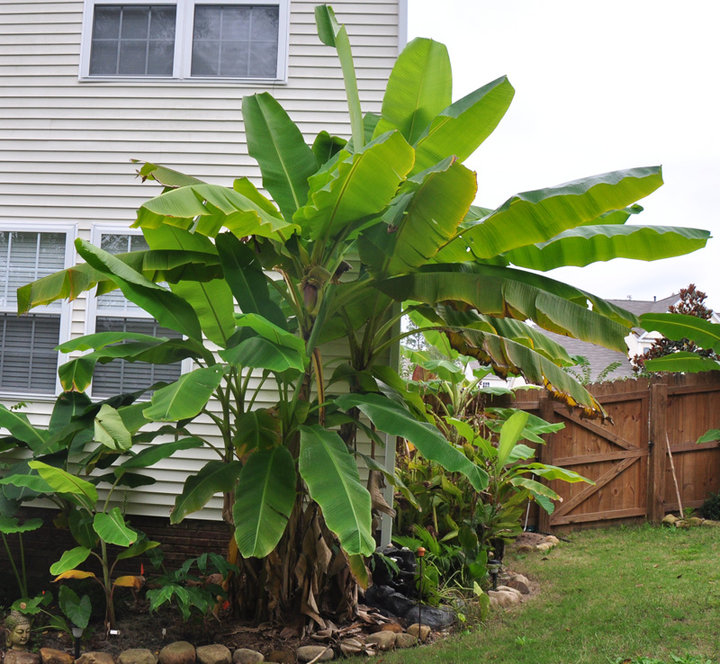Latin Name: Sempervivum tectorum
Common Name: hens and chicks
Family: Crassulaceae
Origin: Mountains of Europe, Balkan Mountains
Tree/Shrub/Herb: Succulent herbaceous perennial
Form: Low, matlike
Habit: Spreading
Buds: Rosette
Leaves: Green-grey, ciliate, sessile, acute apex
Flowers: Monocarpic flowering on long stems
Cultural Requirements: Well drained sandy soil, full sun or partial shade
Landscape Uses: In cracks of stone walls
Notes: The hen is the main plant and the chicks are its offsets, chicks then become hens and the process repeats itself.
Latin Name: Juniperus scopulorum
Common Name: Rocky Mountain juniper
Family: Cupressaceae
Origin: Western North Ameica
Tree/Shrub/Herb: Coniferous shrub
Form: Upright, conical
Habit: Multi stemmed from base
Leaves: Thin, scaly branching leaves, sometimes awl-like
Fruit: Bluish arils
Stem/Bark: Brown bark with vertical striations
Cultural Requirements: Dry, well drained soil, drought tolerant
Landscape Uses: Small garden tree/large shrub
Notes: This plant is dioecious
Latin Name: Syringa vulgaris
Common Name: lilac
Family: Oleaceae
Origin: Balkan peninsula
Tree/Shrub/Herb: Deciduous shrub
Form: Upright, rounded
Habit: Multi-stemmed from base
Buds: Opposite, large ovoid terminal buds
Leaves: Simple, chordate, acute apex, margin entire
Flowers: Pannicles of purple florets
Stem/Bark: Greyish-brown bark, textured, roundish white lenticels
Cultural Requirements: Drought tolerant
Landscape Uses: Colour, large centerpiece shrub
Notes: This plant's scent is quite literally "intoxicating"
Latin Name: Carpinus betulus
Common Name: European hornbeam
Family: Betulaceae
Origin: Europe and Western Asia
Tree/Shrub/Herb: Deciduous tree
Form: Upright, pyramidal
Habit: Dense primary branching pointing upwards
Buds: Alternate, divergent, long, pointed
Leaves: Simple, ovoid, pointed apex, serrated margin, deep venation
Flowers: Male and female catkins
Fruit: Nut surrounded by an involucre
Stem/Bark: Greyish bark, relatively smooth
Cultural Requirements: Many soil types, well drained, full sun
Landscape Uses: Park or boulevard trees
Notes: Has historically been a useful tree for pollarding
Latin Name: Salix purpurea 'Nana'
Common Name: arctic willow
Family: Salicaceae
Origin: Polar regions of the old world
Tree/Shrub/Herb: Deciduous shrub
Form: Upright, rounded
Habit: Dense texture, multi-stemmed from base
Buds: Alternate
Leaves: Oblanceolate, margin entire, simple
Cultural Requirements: Wet soil, will tolerate drier soil, very hardy
Landscape Uses: Texture in larger garden spaces or parks
Notes: Emergent foliage has bluish-green colour
Latin Name: Lavandula angustifolia
Common Name: lavender
Family: Lamiaceae
Origin: Western Mediterranean
Tree/Shrub/Herb: Evergreen woody shrub
Form: Upright, rounded
Habit: Dense branching, multi-stemmed from base
Buds: Opposite
Leaves: Lanceolate, acute apex, glaucous covering, decussately arranged
Flowers: Racemes of purple florets
Stem/Bark: Woody, brown peeling bark
Cultural Requirements: Dry, lean, well drained soil, full sun and heat
Landscape Uses: Border shrub, adds fragrance
Notes: In an ideal climate it can grow to between 1-2m if left unpruned
Latin Name: Gleditsia triacanthos
Common Name: golden honey locust
Family: Fabaceae
Origin: Central North America
Tree/Shrub/Herb: Deciduous tree
Form: Upright, rounded
Habit: Upwards pointing primary branching from a main trunk
Buds: Alternate, covered by petioles
Leaves: Compound leaf, ~20 leaflets, ovoid, rounded tips
Flowers: Cream coloured clusters at base of leaf axils Fruit: Legumes about 6" long
Stem/Bark: Greyish bark, zig-zag twigs, prickles on stems
Cultural Requirements: Deep, sandy, well drained soil
Landscape Uses: Boulevard tree, park tree
Notes: Often displays weak and irregular growth in Vancouver's climate
Latin Name: Sequoia sempervirens
Common Name: California redwood
Family: Cupressaceae
Origin: Western United States
Tree/Shrub/Herb: Coniferous tree
Form: Upright, pyramidal
Habit: Upward sweeping primary branches, single leader
Buds: Alternate
Leaves: Two ranked, flattened needles with pointed tips, two lines of stomata underneath
Fruit: Ovoid cones ~1 inch long
Stem/Bark: Soft reddish-brown bark, peels in vertical strips
Cultural Requirements: Well adapted to dry soils
Landscape Uses: Used as park trees where space permits
Notes: The world's tallest tree at 379.3ft is a Sequoia sempervirens named Hyperion
Latin Name: Gunnera tinctoria and Gunnera manicata
Common Name: gunnera, elephant ears
Family: Gunneraceae
Origin: Chile, Argentina
Tree/Shrub/Herb: Herbaceous perennial
Form: Upright, mounded
Habit: Spreads outwards in a ring formation over time
Buds: Basal
Leaves: VERY large, lobed, curled slightly inwards
Flowers: (tinctoria) Spike of spikes, hard, orange and green colour, closed (manicata) same, but flowers are held open
Stem/Bark: Greeny-pink stems with bumps
Cultural Requirements: Very wet soil, full sun to semi shade
Landscape Uses: Dramatic effect in large areas
Notes: Has an intercellular symbiotic relationship with a cyanobacteria
Latin Name: Musa basjoo
Common Name: Japanese banana
Family: Musaceae
Origin: Japan, China
Tree/Shrub/Herb: Herbaceous perennial
Form: Upright, vaselike
Habit: Multi stemmed, stalks and leaves droop slightly
Buds: Basal
Leaves: Long, lanceolate, veins horizontal to margin
Fruit: Tiny bananas, 1.5 inches
Stem/Bark: Thick green pseudostalks
Cultural Requirements: Rich and moist soil, full sun and heat
Landscape Uses: Grown for foliage in larger garden spaces
Notes: Used traditionally in Japan to make clothing and textiles
Latin Name: Viburnum opulus
Common Name: snowball bush
Family: Adoxaceae
Origin: Europe, northern Africa and central Asia
Tree/Shrub/Herb: Deciduous shrub
Form: Upright, rounded
Habit: Multi-stemmed from base
Buds: Opposite
Leaves: Simple, decussately arranged, tri-lobed, serrated margin
Flowers: Globose cymes, fertile florets surrounded by sterile florets
Stem/Bark: Smooth brown stems
Cultural Requirements: Good to average soil, good drainage, full sun
Landscape Uses: Adds texture to larger garden spaces
Notes: Susceptible to viburnum leaf beetle
Latin Name: Cornus alba 'Elegantissima'
Common Name: red-twig dogwood
Family: Cornaceae
Origin: Siberia, Northern China, Korea
Tree/Shrub/Herb: Deciduous shrub
Form: Upright, rounded
Habit: Mass of arching stems
Buds: Opposite
Leaves: Often variegated, ovate, acute apex, simple, decussate
Stem/Bark: Red stems with white lenticels
Cultural Requirements: Dry to wet soil, hardy
Landscape Uses: Best used in large plantings or drifts
Notes: Not to be confused with Cornus sericea
Latin Name: Forsythia x intermedia
Common Name: forsythia
Family: Oleaceae
Origin: Garden origin
Tree/Shrub/Herb: Deciduous shrub
Form: Upright, irregular
Habit: Multi-stemmed from base
Buds: Opposite
Leaves: Simple, ovate, serrated margin, acute apex
Flowers: Yellow flowers in February/March
Stem/Bark: Reddish stems with lenticels
Cultural Requirements: Moist, well drained soils; full sun
Landscape Uses: Needs a large garden space, provides early season colour
Notes: Flowers on the previous season's wood
Latin Name: Enkianthus campanulatus
Common Name: Japanese bellflower
Family: Ericaceae
Origin: Japan
Tree/Shrub/Herb: Deciduous shrub
Form: Upright, wide
Habit: Multi-stemmed from base, dense, horizontal/upward branching
Buds: Alternate
Leaves: Lanceolate, acute apex, whorled in tiers, lightly crenulate margin
Flowers: Urn-shaped, pendulous flowers
Stem/Bark: Greyish bark
Cultural Requirements: Moist soils but will tolerate drier soils, full sun
Landscape Uses: Provides texture in a larger garden space
Notes: The best pruning practice for this plant is to "leave 'er right alone"
Latin Name: Hypericum calycinum
Common Name: St. John's wort
Family: Clusiaceae
Origin: Southeast Europe, Southwest Asia
Tree/Shrub/Herb: Semi-evergreen shrub
Form: Low ground cover
Habit: Spreading
Buds: Opposite
Leaves: Simple, decussate, sessile, rounded apex, ovate-lanceolate
Flowers: Yellow flower, blooms in mid-summer
Stem/Bark: Red stems
Cultural Requirements: Very hardy, will tolerate poor and dry institutional soils
Landscape Uses: Institutional groundcover
Notes: Vigorous and will outcompete weeds, susceptible to hyparicum rust, Egan isn't a fan
Latin Name: Sequoiadendron giganteum
Common Name: giant redwood
Family: Cupressaceae
Origin: Western United States
Tree/Shrub/Herb: Coniferous tree
Form: Upright, conical
Habit: Horizontal primary branching
Buds: Alternate
Leaves: Multi branching awl like leaves
Fruit: Woody cones about 2 inches long
Stem/Bark: Soft, reddish, furrowed, very thick
Cultural Requirements: Well drained soil, will tolerate dry soil, full sun
Landscape Uses: Park trees, boulevard trees where space permits
Notes: General Sherman is the world's largest tree by volume at 52,508 cubic feet
















No comments:
Post a Comment